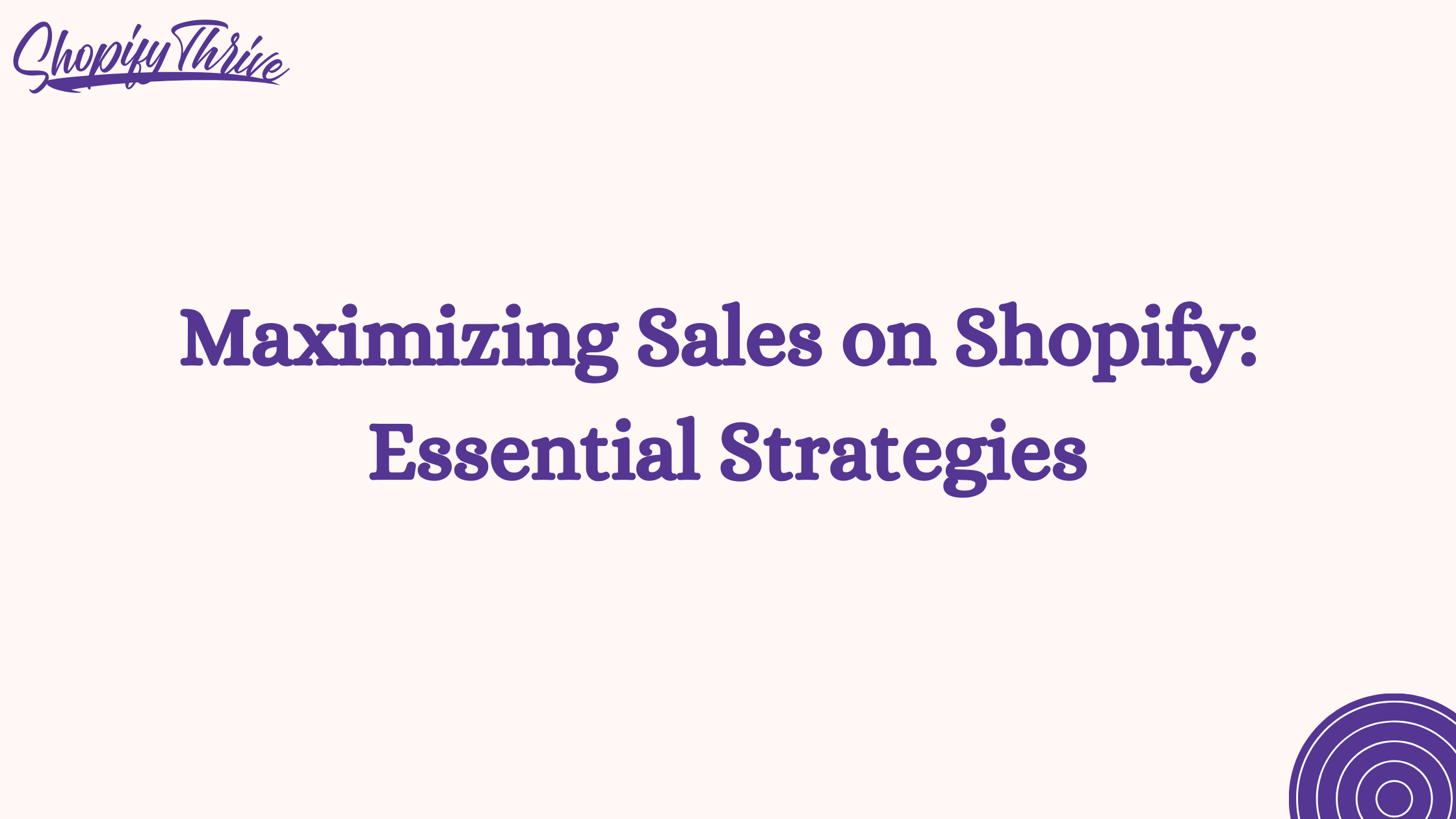
Noor
Maximizing Sales on Shopify: Essential Strategies
- June 11, 2023
- , 5:16 pm
- , Shopify Tips
Introduction
In today’s highly competitive online marketplace, optimizing your Shopify store is essential to stand out, attract customers, and drive maximum sales and success. This comprehensive guide will provide you with the strategies and techniques you need to enhance your store’s visibility, improve rankings on search engine results pages (SERPs), and optimize user experience for higher conversions.
1. Understanding Shopify and Its Potential
Shopify is a versatile and user-friendly e-commerce platform that allows businesses to create and manage their online stores without the need for extensive technical knowledge. With a wide range of built-in features, customizable themes, and robust functionality, Shopify provides a solid foundation for your online business.
MECE Topics:
- Shopify’s history and growth
- Key features and benefits of using Shopify
- Different pricing plans and their suitability for different businesses
- Shopify’s scalability and ability to handle high traffic and sales volumes
- Notable success stories of businesses using Shopify
2. Conducting Keyword Research for Shopify Store Optimization
Keyword research plays a vital role in optimizing your Shopify store for search engines. By identifying the right keywords, you can align your website content with the search intent of your target audience. Here are the steps to perform effective keyword research:
- Brainstorm relevant topics and product/service offerings.
- Use keyword research tools like Google Keyword Planner, SEMrush, or Ahrefs to identify high-volume and low-competition keywords.
- Analyze competitor websites and identify keywords they are targeting.
- Optimize your product descriptions, blog posts, and landing pages with target keywords.
- Monitor keyword performance and make adjustments based on insights from analytics tools.
3. Optimizing On-Page Elements for Improved Rankings
To improve your store’s rankings on search engine results pages (SERPs), it is essential to optimize various on-page elements. Here are some key areas to focus on:
Title Tags and Meta Descriptions
- Craft compelling and keyword-rich title tags (up to 60 characters) that accurately describe the content of each page.
- Write unique and persuasive meta descriptions (up to 160 characters) that entice users to click on your link in the search results.
URL Structure
- Ensure your URLs are clean, concise, and include relevant keywords.
- Use hyphens to separate words within the URL structure for better readability and search engine understanding.
Heading Tags (H1, H2, H3)
- Use H1 tags for page titles and H2, H3 tags for subheadings.
- Incorporate relevant keywords naturally into your headings for better search engine visibility.
Image Optimization
- Compress and resize images to improve page load speed.
- Use descriptive file names and alt text for images, incorporating relevant keywords where appropriate.
- Add image captions and utilize image sitemaps for better indexing.
Content Quality and Relevance
- Create unique, informative, and engaging content that addresses the needs and interests of your target audience.
- Incorporate target keywords naturally throughout the content, including in headings, paragraphs, and bullet points.
- Aim for comprehensive and detailed product descriptions, blog posts, and category pages to provide value and differentiate your store from competitors.
Internal Linking
- Implement a logical internal linking structure to guide users and search engines through your website.
- Link related pages using descriptive anchor text to enhance navigation and improve the flow of link equity.
Conclusion
Optimizing your Shopify store for maximum sales and success requires a comprehensive approach that covers various aspects, from on-page optimization to user experience, link building, social media marketing, email campaigns, and continuous monitoring. By implementing the strategies outlined in this guide, you can improve your store’s visibility, attract more targeted traffic, and ultimately drive higher conversions and revenue. Remember, SEO is an ongoing process, so stay informed about the latest industry trends and adapt your strategy accordingly. Start implementing these techniques today and propel your Shopify store to new heights of success!
Ready to transform and grow your shopify brand?
See why companies like Lash Artisan, Lust For Lashes, joemetry.co and more
launched their shopify Brand With ShopifyThrive.
